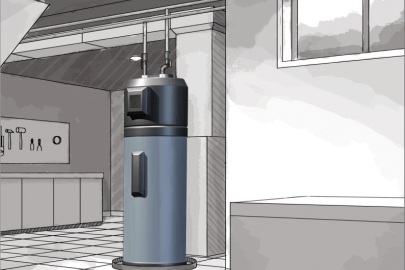The article author is making several good points related to How to Maintain a Hot Water Heater in a Few Simple Steps as a whole in this article directly below.

Hot water is important for daily convenience, whether it's for a rejuvenating shower or washing dishes. To guarantee your hot water system runs effectively and lasts longer, normal upkeep is key. This write-up supplies useful suggestions and insights on exactly how to maintain your home's warm water system to prevent disruptions and pricey repair work.
Introduction
Keeping your home's hot water system might appear difficult, but with a couple of straightforward steps, you can guarantee it operates efficiently for years to find. This overview covers whatever from comprehending your warm water system to DIY upkeep suggestions and knowing when to call expert aid.
Importance of Maintaining Your Warm Water System
Regular upkeep not only extends the life-span of your warm water system however also ensures it runs effectively. Neglecting upkeep can cause decreased performance, higher power expenses, and also early failure of the system.
Indications Your Warm Water System Requirements Upkeep
Knowing when your warm water system needs interest can avoid significant issues. Keep an eye out for signs such as irregular water temperature level, unusual sounds from the heating unit, or corroded water.
Understanding Your Hot Water System
Prior to diving right into upkeep tasks, it's handy to understand the fundamental parts of your warm water system. Generally, this consists of the hot water heater itself, pipelines, anode poles, and temperature level controls.
Monthly Maintenance Tasks
Routine month-to-month checks can help catch minor problems prior to they escalate.
Purging the Water Heater
Purging your hot water heater removes sediment accumulation, enhancing performance and prolonging its life.
Checking and Changing Anode Rods
Anode rods avoid deterioration inside the tank. Inspecting and replacing them when worn is essential.
Evaluating and Changing Temperature Setups
Changing the temperature settings ensures optimal efficiency and safety and security.
Do It Yourself Tips for Maintenance
You can do several maintenance tasks yourself to maintain your hot water system in leading condition.
Checking for Leakages
Consistently inspect pipelines and links for leakages, as these can result in water damage and greater bills.
Evaluating Pressure Alleviation Valves
Testing the stress safety valve ensures it functions appropriately and stops too much stress accumulation.
Protecting Pipelines
Protecting hot water pipelines minimizes warmth loss and can save energy.
When to Call a Professional
While do it yourself upkeep is advantageous, some problems need professional expertise.
Complex Concerns Calling For Specialist Assistance
Examples consist of significant leaks, electrical troubles, or if your water heater is consistently underperforming.
Regular Expert Maintenance Conveniences
Specialist maintenance can include comprehensive evaluations, tune-ups, and making sure compliance with security standards.
Conclusion
Regular upkeep of your home's hot water system is vital for effectiveness, longevity, and expense financial savings. By following these pointers and understanding when to seek specialist help, you can make certain a trustworthy supply of warm water without unexpected disturbances.
How to Maintain an Instant Hot Water Heater
Before tinkering with your hot water heater, make sure that it’s not powered on. You also have to turn off the main circuit breaker and shut off the main gas line to prevent accidents. Also turn off the water valves connected to your unit to prevent water from flowing into and out of the appliance. 2. When you’re done, you have to detach the purge valves’ caps. These look like the letter “T†and are situated on either side of the water valves. Doing so will release any pressure that has accumulated inside the valves while at the same time avoid hot water from shooting out and burning your skin. 3. When the purge valves’ caps are removed, you have to connect your hosing lines to the valves. Your unit should have come with three hoses but if it didn’t, you can purchase these things from any hardware or home repair shops. You can also get them from retail stores that sell water heating systems. Read the user’s manual and follow it to complete this task properly. When the hosing lines are connected, open the purge port’s valves. 4. You should never use harsh chemical cleaners or solutions when cleaning your unit. Make use of white vinegar instead. It should be undiluted and you’ll probably use about 2 gallons. 5. Now flush your water heater. This task should probably take about 40 minutes. We can’t give you specific directions for this because the procedure is carried out depending on the type, model and brand of your heater. With that being said, refer to the user’s manual. 6. When you’re done draining the unit, you have to turn off the purge port valves again. Remove the hosing lines that you earlier installed on each of the water valves. Put the valve caps (purge port) back in their respective places and be very careful so as not to damage the rubber discs that are found inside these caps. 7. Now that everything’s back in place, check your user’s manual again to find out how to reactivate your water heating system. 8. Once it is working, turn one of your hot water faucets on just to let air pass through the heater’s water supply pipes. Leave the tap on until water flows smoothly out of it. https://www.orrplumbing.com/blog/2014/september/how-to-maintain-an-instant-hot-water-heater/

I ran across that review on How to Maintain Your Water Heater & Prolong its Life when looking around the web. Sharing is caring. You just don't know, you may just be doing someone a favor. We value your readership.
Additional Resources